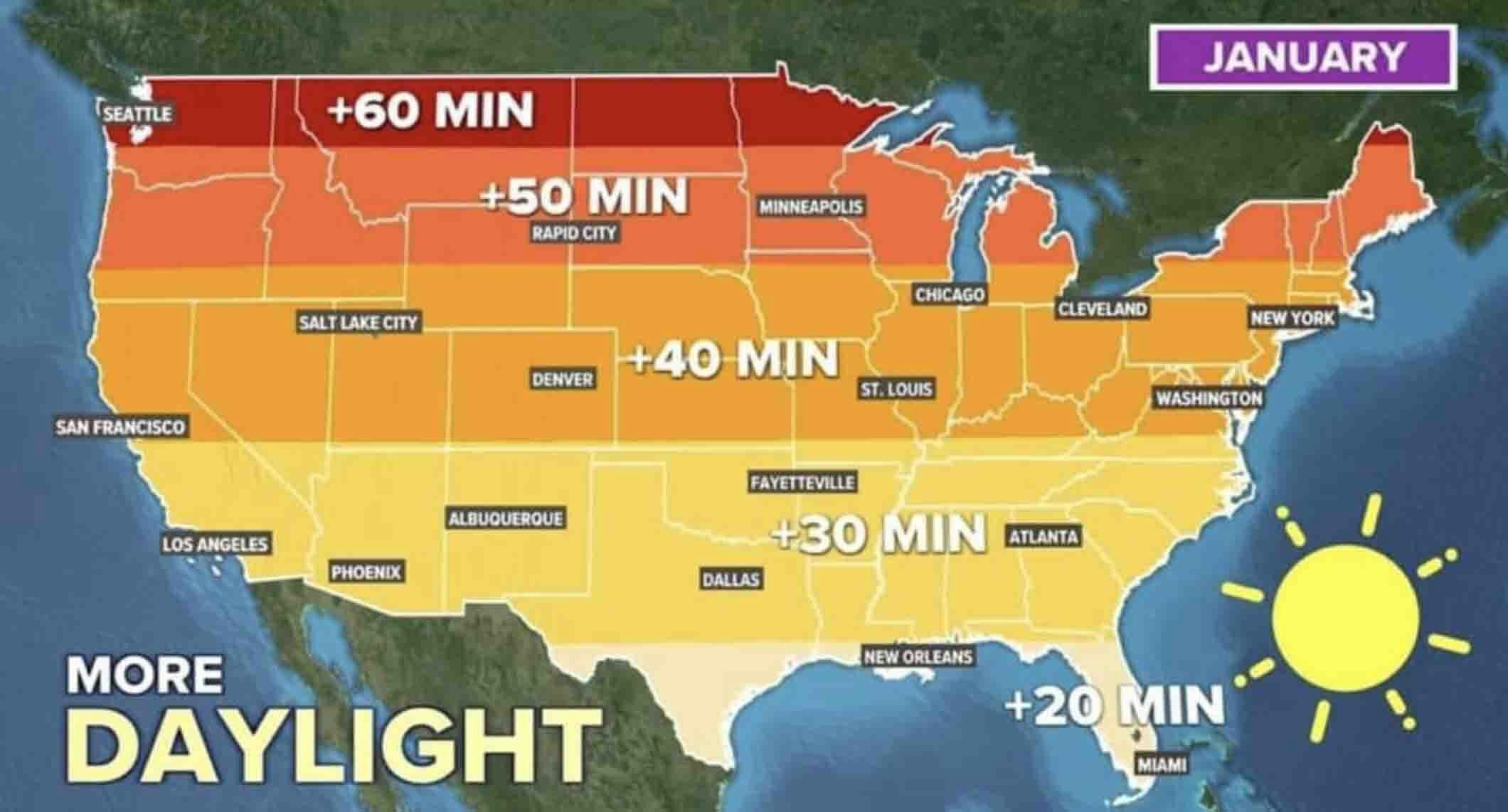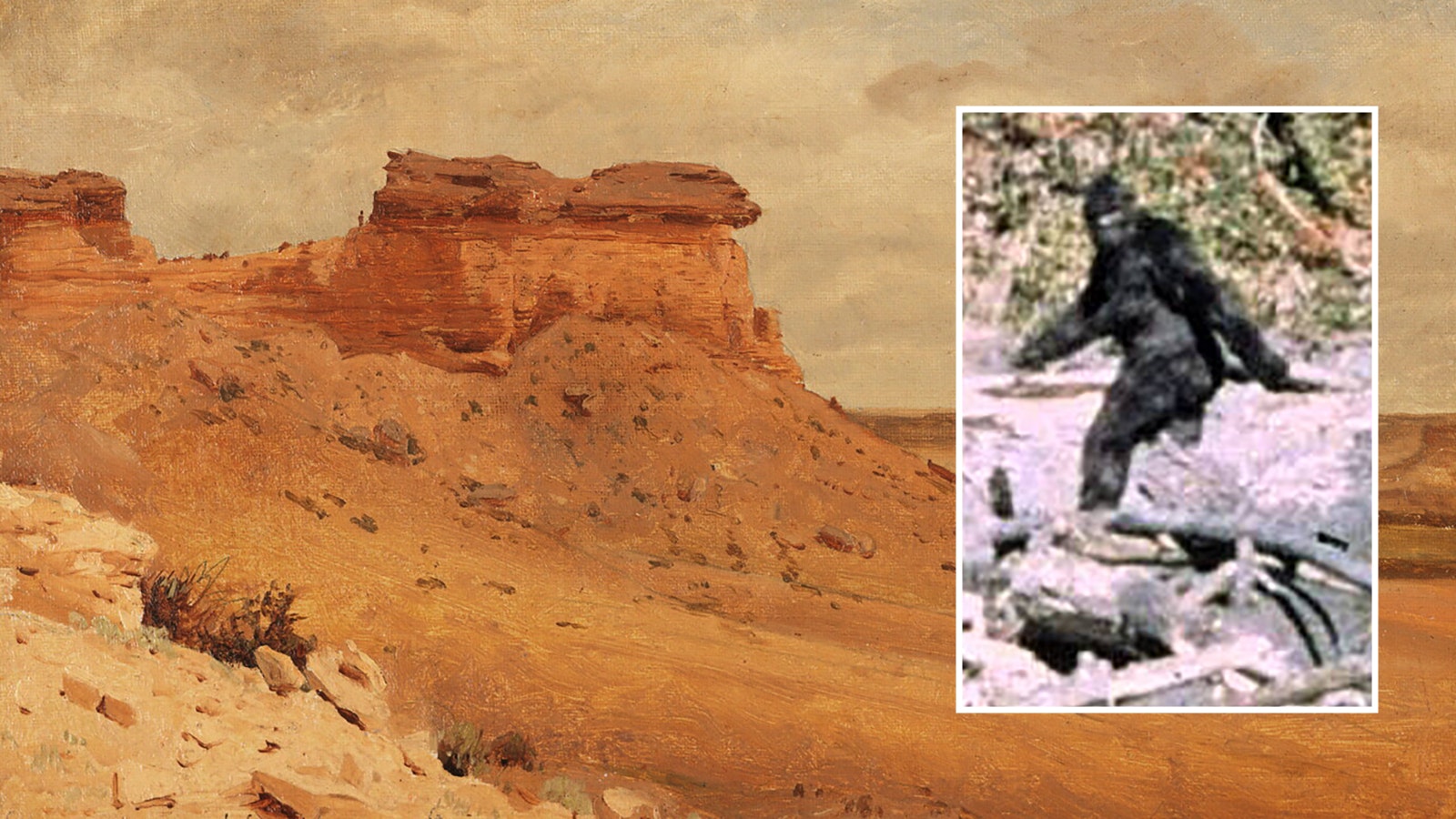Although it may not feel like it in the moment, the days are getting longer. Throughout January, Wyoming communities will gain nearly a full hour of daylight, but some communities will be more a little more fortunate than others.
Gillette residents will be soaking in an extra 53 minutes of sunlight by Jan. 31, while Riverton and Lusk locals will have to make do with an extra 45 minutes.
Most Wyoming communities are enjoying roughly nine hours of sunlight at the beginning of January and will reach almost 10 hours by the end of the month. But spring hasn’t sprung yet, and plenty of winter days lie ahead.
Up And Down
Cowboy State Daily meteorologist Don Day said it's normal to not notice much day-to-day difference in how much sunlight we have in January. The progression is slow, with roughly one minute of extra daylight at either sunrise or sunset every day or an extra minute at both ends (although that’s rare).
It all depends on latitude, Day said, explaining that the summer and winter solstices are when those lines on the globe mean a lot for Wyomingites. In a way, the first month of the year is making up for December when it comes to sunlight.
“January is a lot like December,” he said. “Dec. 22 is when the Earth is tilted the farthest away (from the sun). So, it will take a while during the month of January to get to the end of January where the first part of December was.”
The Earth is now tilting away from the sun in the course of its annual orbit. Day said Wyoming is a large enough state that the daylight disparity will become more noticeable as the month progresses.
“As the Earth starts tilting back, you're going to see the northern areas get an extension of daylight more than the southern areas,” he said. “Your latitude is going to be the determining how many minutes a day you're gaining.”
There’s another culprit that’s responsible for the enduring malaise people tend to feel at the beginning of a new year: daylight saving time. Day said even before the dreaded “spring forward” when we lose an hour, the “fall back” contributes to the monotony of January. That’s because the sudden change of time makes the sun suddenly set much earlier than we were accustomed to.
“When we do the ‘fall back,’ it keeps getting dark pretty early,” he said.
Not Feeling It
More daylight is a net positive, but that doesn’t necessarily make Wyomingites positive in the middle of a Cowboy State winter. Seasonal affective disorder is a legitimate condition affecting millions of people during the season.
Day said he sees it all the time.
“People really get irritable in early February,” he said. “That’s when I notice it. It’s still dark, the weather's lousy, and early February is still far from spring, so people start losing their appetite for winter.”
Seasonal affective disorder usually stems from a vitamin D deficiency, which most people get directly from sunlight. Even with incrementally longer days, Day said there’s not much more vitamin D to be had in January.
“Meteorologically speaking, we don't get a benefit from these days for a while,” he said. “There's a lag. That’s why winter weather can hang on well into the spring. Even though the northern latitudes are starting to get more light, it's still not enough to make a difference.”
The National Institute of Mental Health says common symptoms of seasonal affective disorder include persistent sadness and anxiety, fatigue, loss of appetite, trouble concentrating and feelings of guilt and irritability. Suggested treatments include antidepressants, psychotherapy, and gaining vitamin D through supplements or light therapy.
Let There Be Light
The United States historically gains daylight the fastest between February and April. The 45- to 50-minute daylight gain from the beginning to the end of January will become a nearly two-hour daylight gain through March.
That’s the trend Wyomingites should and can expect, Day said.
“I start to notice it in late February,” he said. “By the time you get into March, the days are starting to extend. But it's a while before I think most people notice.”
March is still a long way off, and there’s more winter between now and the “spring forward” March 10. Ongoing weather patterns suggest to Day that a significant wintery change may be coming for Wyoming.
“Winter is going to be playing catch-up here real fast,” he said. “Between where we're standing now, today through the middle of next week, the trend is colder. We will start to see snow in the mountains and small snow events across the lower elevations. Late next week and next weekend. There are some strong signals that the coldest air of the year is coming, and it will be significant statewide.”
Daylight saving time ends March 10, 2024. Until then, we’ll continue to gradually see more daylight in a way we won’t notice much as it’s happening. Below is how some areas around Wyoming fare with sunlight throughout January, measured from sunrise to sunset:
Afton
- Jan 1: 7:54 a.m. and 5 p.m.
- Jan 31: 7:39 a.m. and 5:35 p.m.
- Gain: 51 minutes
Casper
- Jan 1: 7:36 a.m. and 4:41 p.m.
- Jan 31: 7:21 p.m. and 5:16 p.m.
- Gain: 50 minutes
Cheyenne
- Jan 1: 7:24 a.m. and 4:41 p.m.
- Jan 31: 7:11 a.m. and 5:14 p.m.
- Gain: 47 minutes
Cody
- Jan 1: 7:52 a.m. and 4:46 p.m.
- Jan 31: 7:36 a.m. and 5:23 p.m.
- Gain: 48 minutes
Evanston
- Jan 1: 7:47 a.m. and 5:03 p.m.
- Jan 31: 7:34 a.m. and 5:36 p.m.
- Gain: 47 minutes
Gillette
- Jan 1: 7:37 a.m. and 4:33 p.m.
- Jan 31: 7:21 a.m. and 5:09 p.m.
- Gain: 53 minutes
Jackson
- Jan 1: 7:55 a.m. and 4:57 p.m.
- Jan 31: 7:40 a.m. and 5:32. p.m.
- Gain: 51 minutes
Lusk
- Jan 1: 7:28 a.m. and 4:34 p.m.
- Jan 31: 7:13 a.m. and 5:09 p.m.
- Gain: 45 minutes
Riverton
- Jan 1: 7:44 a.m. and 4:49 p.m.
- Jan 31: 7:30 a.m. and 5:24 p.m.
- Gain: 45 minutes
Thermopolis
- Jan. 1: 7:46 a.m. and 4:46 p.m.
- Jan 31: 7:30 a.m. and 5:22 p.m.
- Gain: 51 minutes
Wamsutter
- Jan 1: 7:38 a.m. and 4:51 p.m.
- Jan 31: 7:25 a.m. and 5:25 p.m.
- Gain: 47 minutes
Andrew Rossi can be reached at arossi@cowboystatedaily.com.





